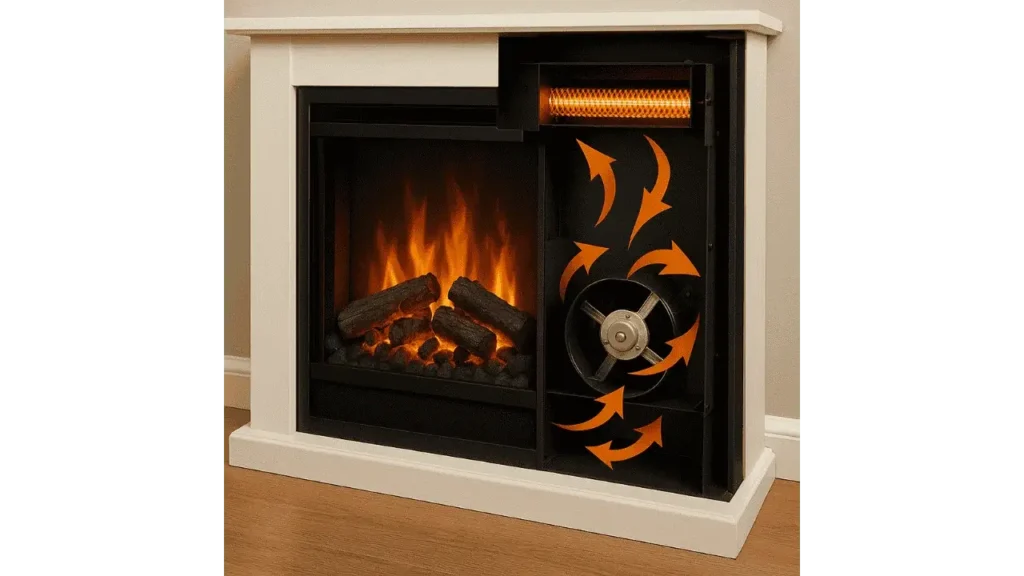There’s a reason electric fireplaces have become a staple in modern homes: they offer warmth and ambiance without the hassle of wood, smoke, or gas lines. But what truly sets them apart is the smart technology that simulates a real fire while delivering functional heat.
“Electric fireplaces provide the charm of a traditional hearth without any of the mess,” explains Amanda Carter, home energy expert at GreenHaven Interiors.
Whether you’re aiming to warm up a room or enhance its atmosphere, understanding how electric fireplaces work helps you make an informed and stylish choice.
The Basics of Electric Fireplaces
Simulated Flame Technology
Electric fireplaces use LED lighting and carefully designed reflectors to create the illusion of flickering flames. The light pattern mimics the movement of real fire, often with adjustable brightness and color settings. Some high-end models even use water vapor or holographic projections for a more lifelike flame effect. Since there is no real combustion, there’s no need for ventilation or chimneys, making them ideal for apartments or interior rooms.
Heat Production Methods
The heat in electric fireplaces typically comes from a fan-forced heater or infrared quartz system. Fan-forced models draw in cool air, heat it over an internal coil, and blow the warm air back into the room. Infrared fireplaces, on the other hand, emit heat waves that warm objects and people directly, much like sunlight. “Infrared heat is a smart choice for those seeking fast, even warmth with minimal energy loss,” notes Raymond Ellis, certified HVAC technician and energy consultant.
Read More: Fireplace Door Ideas for Homeowners
Plug-and-Play Installation
Electric fireplaces are incredibly easy to install. Most units simply plug into a standard wall outlet; no hardwiring or complex setup is required. Wall-mounted, freestanding, and insert-style models are available, offering flexibility for different spaces and design preferences. Many models also come with remote controls or smart home compatibility for added convenience.
Thermostat and Timer Controls
Advanced electric fireplaces feature built-in thermostats that allow you to set and maintain a specific room temperature. Timers can be programmed to turn the unit off after a set period, conserving energy and enhancing safety. These controls make it easy to enjoy the ambiance and warmth without constant adjustment.
Efficiency and Environmental Benefits
Electric fireplaces are highly energy-efficient compared to traditional wood-burning or gas units. Because they convert nearly all input electricity into usable heat, very little energy is wasted. They also produce no emissions, making them an environmentally friendly choice for homeowners looking to reduce their carbon footprint.
Common Features to Look For
When shopping for an electric fireplace, consider features such as multiple flame settings, remote operation, cool-touch glass, and overheat protection. Some models also include sound effects for crackling logs, media storage, or interchangeable flame visuals for different moods. These added elements enhance both safety and enjoyment.
Final Takeaways
Electric fireplaces combine convenience, safety, and visual appeal in one sleek package. Whether you’re aiming to create ambiance or supplement your home’s heating, they offer a low-maintenance alternative to traditional fireplaces. Understanding how they work gives you the power to choose the best unit for your space and enjoy the warmth and glow of a fire without the mess.
- 27 Farmhouse Fireplace Ideas That Bring Warmth & Charm - August 18, 2025
- 25 Fireplace Lighting Ideas to Illuminate Your Hearth - August 7, 2025
- How to Replace an Electric Fireplace Switch? - August 5, 2025



